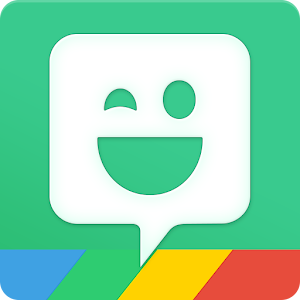Bitstrips app in the Classroom!
This has been a blog post I have been waiting to write ever since Bitstrips appeared and flooded Facebook around two years ago! The app allows you to turn yourself into a cartoon character and then generate a comic to tell a joke, share your mood or describe your day. The problem was that you needed a facebook account to log in. There is the online resource - Bitstrips for School - however the convenience of having children quickly create a comic on the iPad was something I have been waiting on for two years!
It was when I stumbled across some examples from the brilliant @OhLottie, which you can read here, that I realised that it can still be a really useful teacher tool in class. As a teacher, you can create a comic and use this as a stimulus for a quick literacy starter or morning think activity. The visual image can really help children generate vocabulary to help write a sentence. When you use the app you can design your character, this can be based on the teacher or you could create an imaginary classroom friend. One that suggests ideas, or provides examples of writing that children have to improve, if you have used those tactics before 😉.
You can then place them in a scene and there are thousands to choose from! You can change the facial expression, add a caption or even add speech bubble. There is also the option to add other facebook friends into the scene.
Here are a few examples of how I would use it -
 I would love to see how others use this app in the classroom. Please share any by tweeting me or sharing it on my facebook page.
I would love to see how others use this app in the classroom. Please share any by tweeting me or sharing it on my facebook page.
You may also want to check out the Bitmoji app, which was shared with me by@dannyeduk that creates stickers and adds a keyboard to your iPad. These little stickers can be a great way to let children know how you feel towards work they have created on a school blog or add them into apps like Seesaw, Class Dojo or Showbie.
You could even print a set of them and use them as stickers or stamps for children's work in their books!
It was when I stumbled across some examples from the brilliant @OhLottie, which you can read here, that I realised that it can still be a really useful teacher tool in class. As a teacher, you can create a comic and use this as a stimulus for a quick literacy starter or morning think activity. The visual image can really help children generate vocabulary to help write a sentence. When you use the app you can design your character, this can be based on the teacher or you could create an imaginary classroom friend. One that suggests ideas, or provides examples of writing that children have to improve, if you have used those tactics before 😉.
You can then place them in a scene and there are thousands to choose from! You can change the facial expression, add a caption or even add speech bubble. There is also the option to add other facebook friends into the scene.
Here are a few examples of how I would use it -
What has happened in this picture?
What is Mr P drinking?
Can you think of word to describe how he is feeling? Why?
Can you use one of our exciting sentences to explain this scene?
______ing his mouth, Mr P ________ly _______ed to the sink.
How does Mr P feel in the picture? Can you think why?
What would be the best way to put this picture into a sentence?
Like a ____________, Mr P's head _____ with frustration.
or
Mr P was frustrated; his mouth _______; his head _______; his arms _______.
(Thanks to @ICTEvangelist for letting me use his avatar)
What is happening in this scene? How does Mark feel? How do you know? Can we turn this into a 3_ed sentence?
How is Mr P feeling? Why?
Who do you think is right in this scene? Why?
(Thanks to @BrynGoodman for letting me use his avatar)
Who speaks first? How do you know?
How would Mr P say this?
What goes inside the speech bubble? Make sure this goes inside the speech marks.
Notice when Bryn replies, he speaks on a new line.
Can you write out this conversation using direct speech and carry the conversation on.
What do you think Bryn has done that has upset Mr P?
I could go on with endless other examples but I am sure you get the idea here. Using the app to quickly generate a quick visual comic that can be used for some useful inference and deduction questions or challenge the children to write a sentence/s about the picture. Even help children visualise direct speech and encourage more show not tell in their writing. Ideally, the ability for children to use this on their iPads to generate a comic and use it as a storyboard would be fantastic! But for now, this can be a really useful tool for teachers, especially as it is FREE.
You may also want to check out the Bitmoji app, which was shared with me by
You could even print a set of them and use them as stickers or stamps for children's work in their books!









This sounds like a great app. Will have a play about with it this week and then introduce it to my class straight after half-term. Thanks.
ReplyDelete